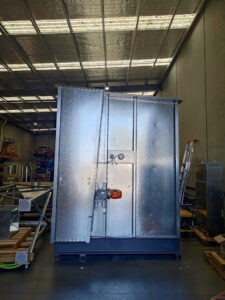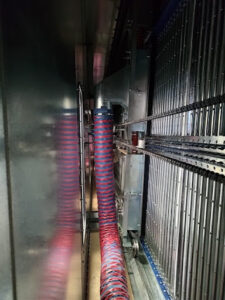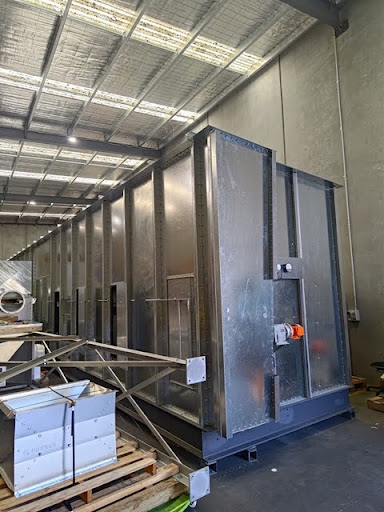Mideco’s Dust Collector System Ready for Action in Nauru
Ronphos, or the Republic of Nauru Phosphate Corporation enlisted the help of Mideco on the 23rd of August last year to design and manufacture a dust collector system that would form the basis of solving Nauru’s severe dust problem.
Nauru is a Pacific island nation northeast of Australia suffering from a chronic dust crisis resulting from decades of phosphate mining. The dust problem was so severe that it could be tasted in the air over large parts of the island, keeping one area always under a dust cloud.

Mideco’s model 45A, a reverse air filter (RAF) dust collector system.
Thankfully, the project has now been completed, and all parts are ready for dispatch. Mideco is currently only awaiting confirmation from RONPHOS management regarding engineering details for some equipment interfaces.
How Mideco’s Dust Filter Helped
For this project, we deployed our Mideco model 45A.
An illustration of Mideco’s dust collector system.

As pictured above, our dust collector system works by first dust extracting from the kiln drop-out box (the green box on the left) and through the cyclone nest (the green pillars next to the drop-out box).

A cyclone nest (pictured above) is a cluster of cyclone separators that remove particles from an airstream by forcefully creating a ‘cyclone’ to separate the heavier particles from the smaller ones.
Due to this forced change in direction, the dust particles in the air continue moving in their original direction and separate from the airstream, creating a highly effective dust-collecting system.
Cyclone nests are often used as a means to remove denser particles from the air stream, improving air quality and thereby reducing any risk of respiratory issues for site employees and equipment damage.

Here, dust particles measuring >40µm (microns) are spun out, to be dropped into the screw conveyor, while the smaller particles are transferred to the inside of the dust collector system, to fall into the screw conveyor which is then conveyed to the dust bagging system.
This allows clean air to be blown back into the atmosphere through the fan, while the collected dust can be bagged and sold for profit.

Our dust collectors utilise ‘reverse air filter’ (RAF) technology that traps dust regardless of dust load to emission ratio, particle size, and hygroscopic or adhesive properties.
RAFs dislodge accumulated dust from filter bags by reversing airflow, and blowing clean air back into the system while the dust falls into a hopper. This continuous process efficiently dedusts, minimising downtime.
Furthermore, Mideco’s dust collectors perform exceptionally well even in strenuous conditions such as high moisture and temperature levels, making our models the ideal choice for solving Nauru’s dust problem.
Thanks to RONPHOS enlisting our aid and gaining access to our reverse air filter bags, they can easily clean the filter fabric, resulting in lower dust emissions, lower energy consumption, the ability to reuse filter bags, and fit in tight spaces for easy storage.
Acquire Unparalleled Dedusting Solutions with Mideco
When it comes to ensuring health and safety on phosphate-dust-ridden islands such as Nauru, clean air is paramount. We achieve our commitment to keeping workplaces and the environment safe by providing unparalleled dedicated solutions to protect our communities.
Contact us and partner with Mideco today and let our track record of worldwide success keep thousands of people safe with us.

